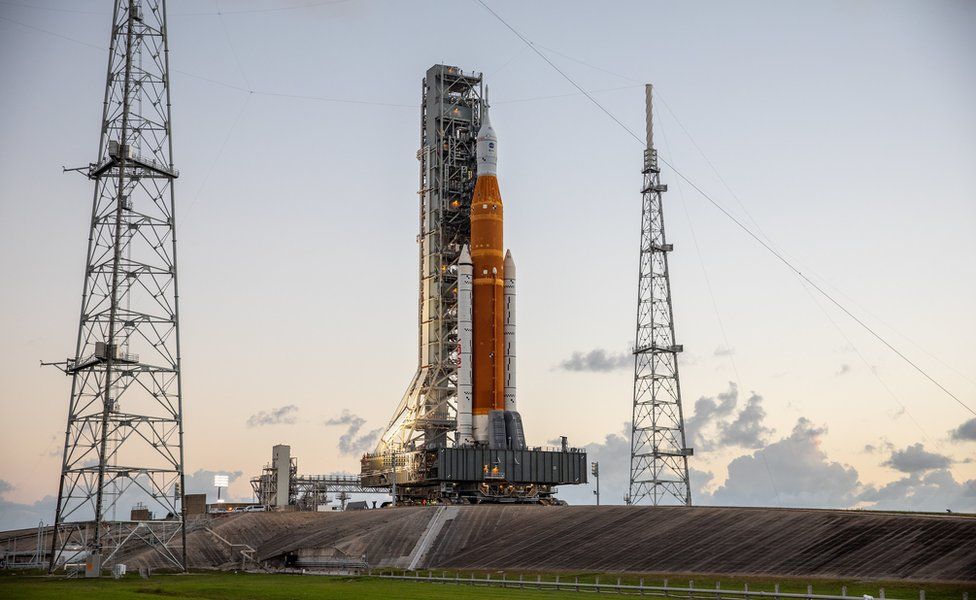ARTICLE AD BOX
 Image source, NASA
Image source, NASA
By Jonathan Amos
BBC Science Correspondent
The US space agency will try again in the coming hours to launch its most powerful ever rocket.
Nasa was thwarted by a mix of technical and weather woes when it tried to get the Artemis I Moon mission off Earth back in August and September.
But the mood remains positive at Florida's Kennedy Space Center for a third attempt.
"We're going to do our best," Mike Sarafin, Nasa's Artemis mission manager, told reporters.
"That said, if we have an issue that occurs that would cause us to meet one of our no-go criteria - it may not be our day."
Wednesday's bid to despatch the Space Launch System (SLS) rocket is scheduled to occur at some point in a hour window that opens at 01:04 local time (06:04 GMT).
Meteorologists are forecasting an 80% probability of favourable weather conditions.
The 100m-tall rocket's objective will be to hurl a human-rated capsule in the direction of the Moon, something that hasn't happened since Project Apollo ended in 1972.
Artemis I is a technology demonstration, so there will be no crew aboard on this occasion, but should everything go to plan then Artemis II, expected to fly in 2024, very definitely will be carrying people. Artemis III, in perhaps 2025 or 2026, is the flight that will try to get astronauts down to the lunar surface.
The SLS has had a tricky time getting ready to launch, even having to ride out a passing hurricane in recent days while standing on Kennedy's famous Pad 39B.
And as a new vehicle, engineers are having to learn its quirks, especially during the process of filling the rocket with the 2.7 million litres of cryogenic fuel needed to power the four main engines under its core stage.
The previous launch attempts were plagued by leaks of the super-cold liquid propellents when they were being pumped into the vehicle's tanks.
Wednesday's fuelling process is using a slower approach than in the past, said launch director Charlie Blackwell Thompson: "What we refer to as a kinder, gentler method."
If the SLS does get away this time, it is sure to be a spectacular sight.
The vehicle will be pulling 39.1 meganewtons (8.8 million pounds) of thrust off the pad. That's close to 15% more than the Saturn V rockets that sent the Apollo astronauts on their way to the Moon in the 1960s and 70s.
Put another way, the SLS's engines could power the equivalent of almost 60 Concorde supersonic jets on take-off.
The first phase of the SLS's ascent will last just over eight minutes.
This will put the upper-stage of the rocket, with the Orion capsule still attached, into a highly elliptical orbit that would see the two of them come crashing back to Earth without any further effort.
So, the upper-stage will have to raise and circularise the orbit before then boosting Orion in the direction of the Moon.
Image source, NASA
Image caption,Artwork: The upper-stage of the rocket will put the Orion capsule on a path to the Moon
Confirmation that the capsule is on its own, on track and speeding through space should come two hours and five minutes after launch.
The planned mission length is just under 26 days. It will end with Orion returning to Earth for a splashdown in the ocean off San Diego in California on 11 December.
The mission duration is slightly longer than the 21 days that capsule manufacturer Lockheed Martin says is the maximum time astronauts should spend in the spacecraft. But the company and Nasa want to stretch the spacecraft to understand its limits.

 2 years ago
38
2 years ago
38








 English (US) ·
English (US) ·